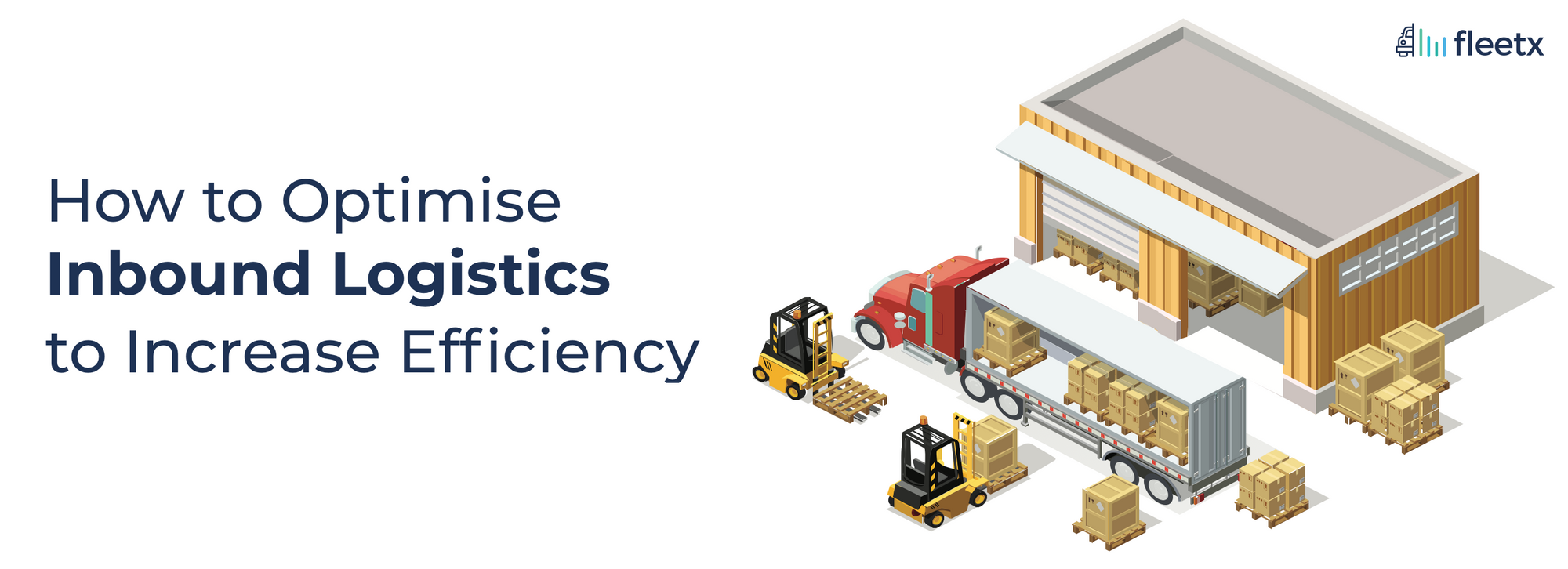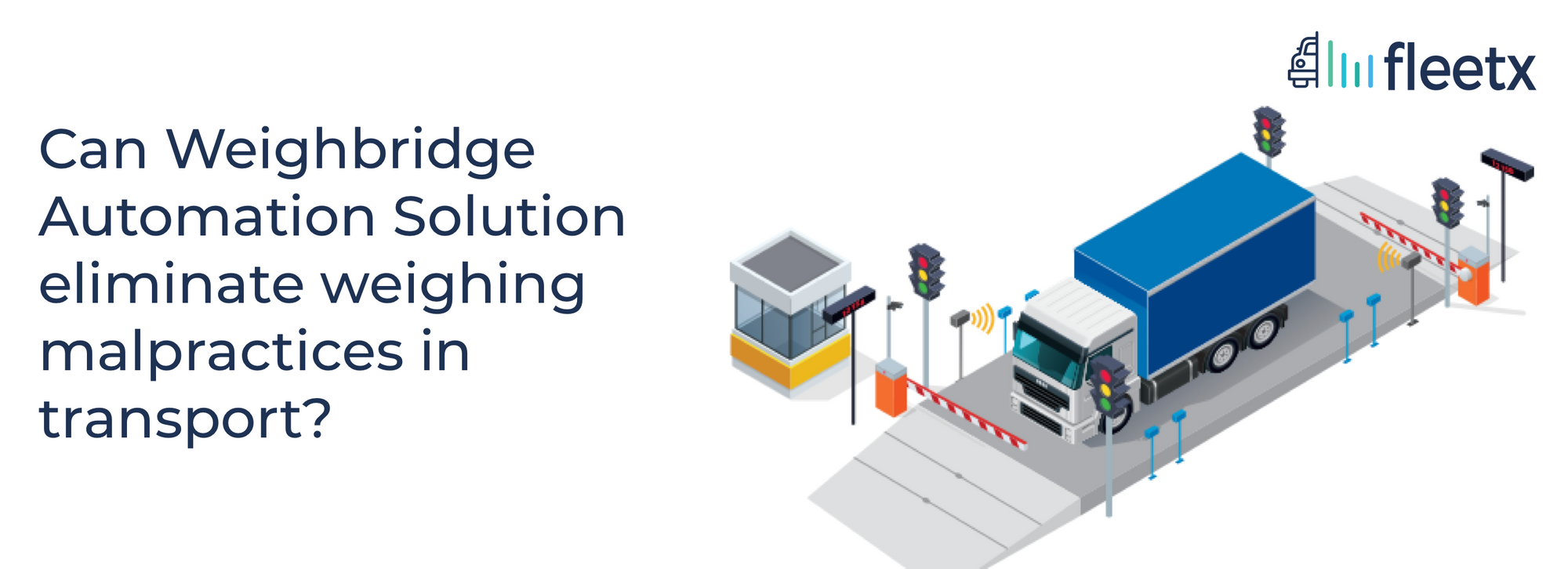
Supply chain management is often chaotic and inefficient, partly because it is still poorly understood. Which is a surprise, because it contributes to a lot of the business input costs, and can drastically reduce them if inbound and outbound logistic processes are optimised. A lot of the time, supply chains and logistics processes within businesses aren’t strategically designed, and grow organically over time. They are rarely given due consideration and lack the scrutiny required to ensure that they operate as efficiently as possible. Fleetx likes to make sure that all aspects of your business run as efficiently as possible, and we hope this article can help you optimise inbound logistics processes to increase your profit margin and limit input costs.
Even though they are often used interchangeably, this is a good opportunity for us to distinguish between supply chain management and logistics, because it will make the content of this article more clear. Inbound and outbound logistics refers to getting the product from one point to another, while supply chain management refers to the entire process of moving the product from its original destination to the customer. To make it a little more concise, logistics refers to the movement of goods within one company, while supply chain management covers the movement of goods through different businesses in the supply chain.
Why should you optimise your inbound logistics network?
Inbound logistics refers to the network that brings products or materials to your business. Your inbound logistics network includes everything you need to transport, store, and deliver goods to your business from other suppliers. The nature of the products that you bring into your business depends on the industry that you operate in. Inbound logistics can cover things like raw materials if you are a manufacturer, or finished products if you deal with assembly and distribution. To sum it up, inbound logistics includes everything your business needs to create the finished product that you eventually sell.
A majority of businesses spend most of their efforts on optimising their outbound logistics network (which is also important!) but fail to give the same amount of consideration to their inbound logistics network. And it’s surprising, because goods and products coming into your business take up a lot of time, labour and resources.
Optimising inbound logistics in your business can make a real impact, help you save money in a big way and streamline your operations. Your inbound logistics network consists of several variables, and these all have to be managed to achieve efficiency and accuracy. If your inbound logistics are badly planned, mismanaged or unreliable, your business will have to suffer the consequences!
How to Optimize the Inbound Logistics Process?
Everyone is familiar with the phrase, ‘a penny saved is a penny earned’, and it is highly relevant to your inbound logistics processes. Inbound logistics is both incredibly complex and important, and experts consider it to be the final challenge to reducing transportation costs. Optimizing your inbound logistics network can help you streamline your business operations, and to achieve this, you must have a full picture of every moving part in the network and understand how the network functions.
For your inbound logistics network to operate as efficiently as possible, you have to optimize everything from receiving products to transporting those products to your facilities and distributing them. Streamlining this process is not easy and will require a considerable effort from supply chain managers and warehouse operators. To help you get started, we’ve compiled a list of activities you can engage in to optimise inbound logistics in your network.
Build strategic partnerships with your suppliers
- Discuss delivery strategies with your suppliers that benefit both parties. Determine what route is the most optimal and create a routing guide to define the standard operating procedures. The routing guide can include:
- Modes of transportation and what carriers to use on specific routes
- Rate requirements
- Service requirements
We suggest using online routing guides because they are dynamic and can adapt to changes in the shipping landscape and give you the best deal when rates fluctuate. By implementing a routing guide, you can limit ad-hoc expenses put forward by suppliers. It can help establish rate benchmarks and eliminate the use of non-authorized carriers.
- Develop and implement Vendor Inbound Compliance Standards (VICS): Establishing a VICS will help you streamline and optimise your supply chain, and reduce challenges caused by supplier specific behaviour. It is advisable to have all your suppliers agree to your VICS if they want to work with your company. Through this, you can ensure that all your suppliers behave appropriately, and penalize negative behaviour. For VICS to be effective, you have to have a strong monitoring system and ensure that non-compliance is dealt with effectively. This will help your suppliers to take these standards seriously.
- Eliminate costly errors: In the supply chain, errors occur often and can come at a high cost. For example, shipments may be non-deliverable due to flawed or outdated information, or containers might be detained at ports because import/export documentation isn't complete. To avoid these errors and their associated costs, logistics managers should develop risk assessment tools and make use of technology to identify the source of possible errors and improve their shipping processes.
- Consolidate shipments: Less-than-truckload (LTL) shipments are inefficient and can lead to unnecessary costs both in terms of shipping and unloading. Consolidating your shipments is an extremely effective method of saving on these transportation costs, and it can generate huge payoffs if you are operating on a large scale. Logistics managers can streamline inbound and outbound transportation movements so all trucks and containers hold as much capacity as possible, and reduce the number of trips that need to be made.
There are challenges associated with this, because consolidation can be a complex process. These are a few things to keep in mind if you decide to consolidate your shipments:
- Shipping and handling requirements
- Origin and destination of the shipment
- Weight of shipment
- Arrival of different shipments
- Availability of trucks and drivers
- Educate decision-makers: Working in-house with your managers and decision makers is one of the most significant steps that you can take. They should be educated on what their decisions mean for the entire logistics network and what the trade-offs are so that they are well equipped to make ones that optimise inbound logistics processes.
- Work with a third party logistics (3PL) provider: 3PLs are experts in creating strategies to optimise inbound logistics networks and will help ensure that the movement of goods and materials into your business meets your operational objectives. An advantage of working with 3PLs to optimise inbound logistics is that it is less expensive than doing it in-house. 3PLs can help scale your company’s inbound logistics network without costly investment in labor, equipment, and infrastructure.
The bottom line
Optimising inbound logistics processes with appropriate technological solutions will help stay in control of your dynamic supply chain and improve your business operations. You will be able to access data on all of your shipments in one place, and enable analytics to guide the process. The power of inbound logistics software solutions can provide a great deal of insight into the decision-making process. It will help you identify gaps to improve efficiency, reduce overhead through cost analysis, and minimise material consumption and waste.



